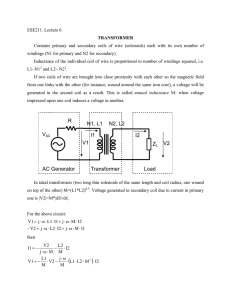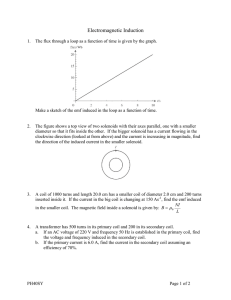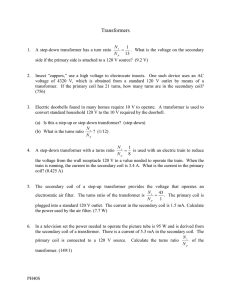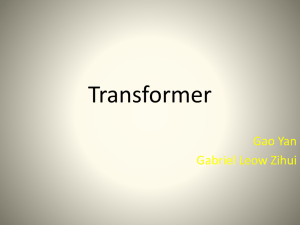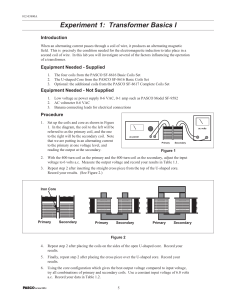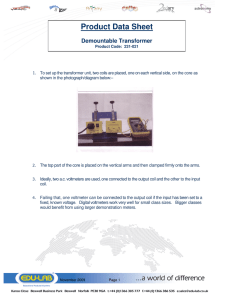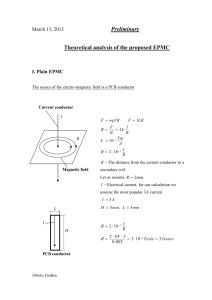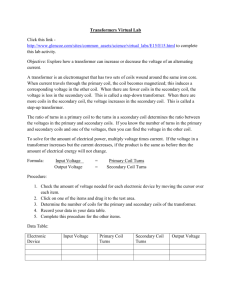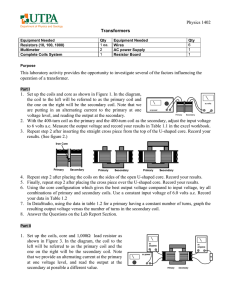Alternating Current
advertisement
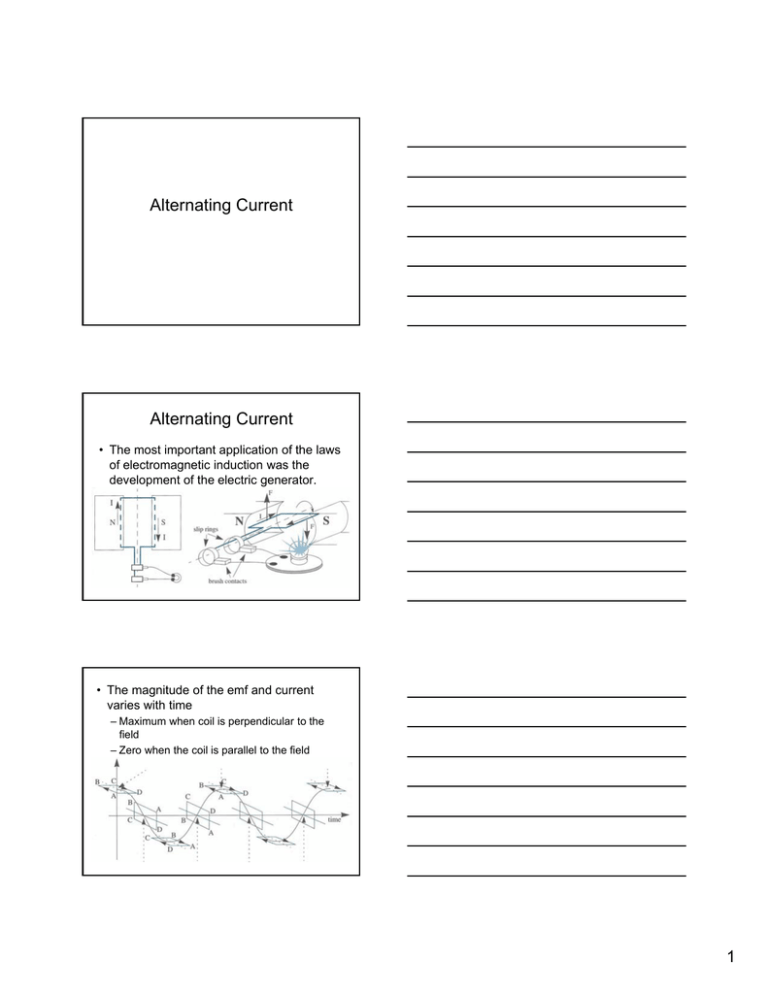
Alternating Current Alternating Current • The most important application of the laws of electromagnetic induction was the development of the electric generator. • The magnitude of the emf and current varies with time – Maximum when coil is perpendicular to the field – Zero when the coil is parallel to the field 1 We can calculate the emf… BA cos N t Transformers • A transformer is a practical application of electromagnetic induction that can be used for increasing or decreasing AC voltages. • Transformers consist of: – Two coils of wire known as the primary and secondary coils – Each coil has a laminated soft iron core to reduce eddy currents (increases efficiency) – Enclosed on top and bottom with soft iron bars that increase the strength of the magnetic field 2 • When a current flows in the primary coil, a magnetic field is produced. • It grows and “cuts” the secondary coil inducing a current. • The size of the voltage input/output depends on the number of turns of wire in each coil: I s Vp N p I p Vs N s • If a transformer is 100% efficient, the power produced in the secondary coil should equal the power input of the primary coil. I pV p I sVs • In practice, the efficiency is closer to 98% due to eddy currents. Example • A transformer has 50 turns in its primary coil and 1000 turns in its secondary coil. If the input voltage is 110 V, what is the output voltage? Vp Vs Vs Vp N s Np Np Ns (110 V)(1000) 2200 V (50) 3 Power Transmission • Electric power is usually transmitted over high voltage (high tension) power lines. • Copper wire has a resistance and over long runs some energy will be lost to the surroundings as heat. • A low current (high voltage) minimizes this loss. Example • An average of 120 kW is delivered to a suburb 10 km away. The transmission lines have a total resistance of 0.40 Ω. Calculate the power loss if the transmission voltage is: – 240 V – 24 000 V 240 V P IV I P 120 x103 W 500 A 240 V V Power loss: P I 2 R (500 A ) 2 (0.40 ) 100 kW 4 24 000 V P IV I P 120 x103 W 5A 24 000 V V Power loss: P I 2 R (5 A ) 2 (0.40 ) 10 W 5
